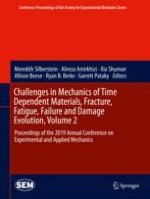Challenges in Mechanics of Time-Dependent Materials, Volume 2 of the Proceedings of the 2019 SEM Annual Conference& Exposition on Experimental and Applied Mechanics, the second volume of six from the Conference, brings together contributions to this important area of research and engineering. The collection presents early findings and case studies on fundamental and applied aspects of Experimental Mechanics, including papers in the following general technical research areas:
Characterization Across Length Scales
Extreme Conditions & Environmental Effects
Soft Materials and Biomaterials
Damage, Fatigue and Fracture
Structure, Function and Performance
Rate Effects in Elastomers
Viscoelasticity & Viscoplasticity
Research in Progress
In-situ Techniques and Microscale Effects on Mechanical Behavior
Fracture and Fatigue in Brittle Materials
Novel Experimental Methods
Fatigue and Fracture in Extreme Environments
Integration of Models and Experiments
Failure in Elastomers and Gels
Rate Effects in Elastomers
Microscale and Microstructural Effects on Mechanical Behavior
Mechanics of Energy Materials
Additive Manufacturing: Fatigue and Fracture
Mechanics of Composite Materials
Interfacial and Mixed-Mode Fracture
Vibration Effects and High Cycle Fatigue
